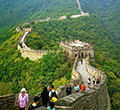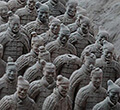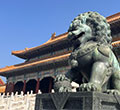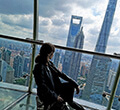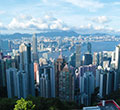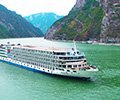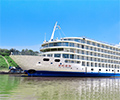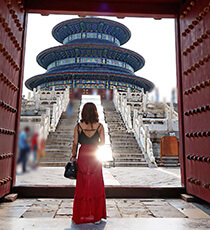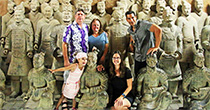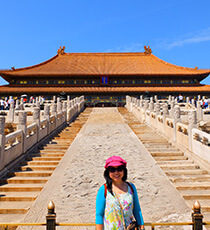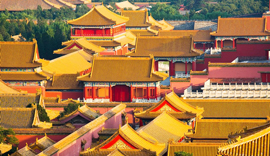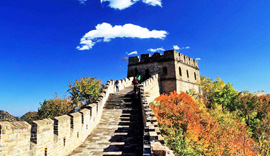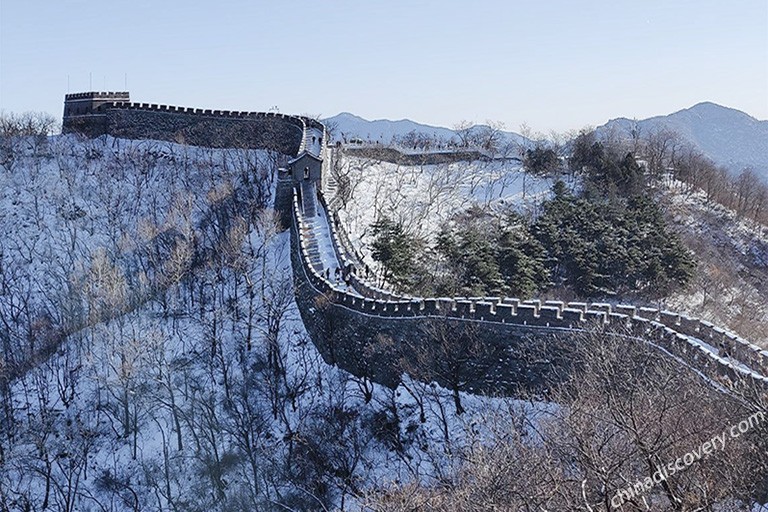Ice Festival in Harbin and a “friendly visit” of Corona Virus. - China Classic Part 1
-- Marcin's 6 Days Harbin Winter Trip with Datong
-
 Marcin (USA)
Marcin (USA)
-
Departure Date2020-01-20
-
Travel Length6 Days
-
Travel ThemeNature, Culture, Friends
-
Group Size2
-
Travel RouteHarbin - Beijing - Datong
-
HighlightsHarbin Ice and Snow Festival, Ice and Snow World, China Snow Town, Yangcao Mountain, Sun Island Resort, Siberian Tiger Park, Yungang Grottoes, Hanging Monastery, Shanhua Temple, the Nine Dragon Wall
Our guest Marin went to Harbin with his friend in January 2020. He then shared their travel experiences during this particular period on his blog. The following text and images are from his blog website (https://marcinczerniakow.wordpress.com):
Harbin

Harbin Ice and Snow World, Photo Shared by Marcin, Tour Customized by Lily
Harbin has 5,282,093 inhabitants, while the total metropolitan population is up to 10,635,971. Harbin serves as a key political, economical, scientific, cultural and communications hub in Northeast China, as well as an important industrial base of the nation. Harbin, whose name was originally a Manchu word meaning “a place for drying fishing nets”, grew from a small rural settlement on the Songhua River to become one of the largest cities in Northeast China. Founded in 1898 with the coming of the Chinese Eastern Railway, the city first prospered as a region inhabited by an overwhelming majority of immigrants from the Russian Empire. Having the most bitterly cold winters among major Chinese cities, Harbin is heralded as the Ice City for its well-known winter tourism and recreations. Harbin is notable for its beautiful ice sculpture festival in the winter. Besides being well known for its historical Russian legacy, the city serves as an important gateway in Sino-Russian trade today. In the 1920s, the city was considered China’s fashion capital since new designs from Paris and Moscow reached here first before arriving in Shanghai.

Night View of Ice and Snow World during Ice Sculpture Festival, Photo Shared by Marcin
A small village in 1898 grew into the modern city of Harbin. Polish engineer Adam Szydłowski drew plans for the city following the construction of the Chinese Eastern Railway, which the Russian Empire had financed. The Russians selected Harbin as the base of their administration over this railway and the Chinese Eastern Railway Zone. The railways were largely constructed by Russian engineers and indentured workers. The Chinese Eastern Railway extended the Trans-Siberian Railway: substantially reducing the distance from China to Vladivostok and also linking the new port city of Dalny (Dalian) and the Russian Naval Base Port Arthur (Lüshun).

Panoramic View of the Ice and Snow World in January 2020, Photo Shared by Marcin

Marvin was Eating the Strawberries on Sticks in 20th January 2020, Photo Shared by Marcin
The settlement founded by the Russian-owned Chinese Eastern Railway quickly turned into a “boomtown,” growing into a city within five years. The majority of the Russians who settled in Harbin came from southern Russia, and the dialect of Russian spoken in Harbin was derivative of the dialect of Russian spoken in Odessa. In addition there were many Ukrainians, Jews, Poles, Georgians, and Tatars.

Ice Sculpture Shows on Sun Island in 2020, Photo Shared by Marcin
The city was intended as a showcase for Russian imperialism in Asia and the American scholar Simon Karlinsky who was born in Harbin in 1924 into a Russian Jewish family wrote that in Harbin: “the buildings, boulevards, and parks were planned—well before the October Revolution—by distinguished Russian architects and also by Swiss and Italian town planners”, giving the city a very European appearance. Starting in the late 19th century, a mass influx of Han Chinese arrived in Manchuria, and taking advantage of the rich soils, founded farms which soon turned Manchuria into the “breadbasket of China” while others went to work in the mines and factories of Manchuria, which become one of the first regions of China to industrialize. Harbin became one of the main points through which food and industrial products were shipped out of Manchuria.

Endangered Siberian Tigers in Siberian Tiger Park, Photo Shared by Marcin
Siberian Tiger Park, the largest breeding center in the world for endangered Siberian Tigers.

Datong, A Prefecture-level City in Northern Shanxi Province
Datong is a prefecture-level city in northern Shanxi Province in the People’s Republic of China. It is located in the Datong Basin at an elevation of 1,040 metres (3,410 ft) and borders Inner Mongolia to the north and west and Hebei to the east. It had a population of 3,318,057 during the 2010 census, of whom 1,629,035 lived in the built-up area made of the three urban districts of Chengqu, Kuangqu and Nanjiao.

The Area of Present-day Datong in January 2020, Photo Shared by Marcin, Tour Customized by Lily
The area of present-day Datong was close to the Beidi (“Northern Barbarian”) state of Dai, which was conquered by the Zhao clan of Jin in 457 BC. It was a frontier land between the agricultural Chinese and Beidi and the nomads of the Eurasian steppe (known to the Chinese as the Hu or Donghu). The area was well known for its trade in horses. Pingcheng County formed part of the Qin commandery of Yanmen. It continued under the Han, who founded a site within present-day Datong in 200 BC following their victory against the Xiongnu nomads at the Battle of Baideng. Located near a pass to Inner Mongolia along the Great Wall, Pingcheng blossomed during the following period and became a stop-off point for camel caravans moving from China into Mongolia and beyond. It was sacked at the end of the Eastern Han. Pingcheng became the capital of Northern Wei from AD 398–494. The Yungang Grottoes were constructed during the later part of this period (460–494). During the mid to late 520s, Pingcheng was the seat of Northern Wei’s Dai Commandery. The city was renamed Datong in 1048. It was the Xijing (“Western Capital”) of the Jurchen Jin dynasty prior to being sacked by the Mongols. It was sacked again at the end of the Ming in 1649, but promptly rebuilt in 1652.

Yungang Grottoes in Datong, Shanxi, Photo Shared by Marcin
Yungang Grottoes, consist of 53 grottoes with 51,000 statues. The Grottoes are the highlight visit to Datong. Treasure of traditional Chinese art influenced by Greek and Indian style.

Hanging Monastery at the Foot of Mt. Hengshan, Photo Shared by Marcin
Hanging Monastery at the foot of Mt. Hengshan, temple is on the west side of a hill at over 50 meters high above the ground. Amazing structure set amidst fantastic scenery.

Train Travel from Beijing to Datong in January 2020, Photo Shared by Marcin
Another exciting trip to PRC (China). My map of PRC becomes slowly filled with blue markers – visited places . If I would combine this trip with prior “Silk Road Trip” it would stretch from Harbin in North East via Xian and Urumqi all the way to Kasha-gar at western end of China. From snowy forests via sandy deserts to western snowy mountain picks. Amazing , diverse and dynamic country. Another exciting aspect of this visit to PRC was Chinese New Year period and the “biggest human migration in history” , that I could witnessed traveling on the biggest high speed railroad network in a world.

A Selfie in Datong, Photo Shared by Marcin, Tour Customized by Lily
On a personal note. One of the major challenges for travelers are health issues. Malaria, Dengue, Typhoid Fever are present in tropical areas and can make a travel quite difficult and some times simply dangerous. Typhoid left me barely alive during my trip to Mali, recovering on Niger River on the way to Timbuktu will remain in my memories forever. To clarify those are not a happy memories. Dengue outbreaks scraped my plan to visit “Bikini Atoll” last year. Recent visit to Solomon Islands was “sponsored” by measles outbreaks in Melanesia. This year visit to PRC occurred during “explosion” of corona virus in city of Wuhan. Rapid spread of the virus prompted authorities to close multiple cities and put on lock down 56 million people. All attractions, cinemas, museums were indefinitely closed and continuing the trip simply made no sense anymore. Question remains if outbreak will get contained or spread around the world. Only time will tell. With sadness I had to shorten this amazing trip to be finished on a later date. I hope that Taal volcano near Manila Philippines will stop misbehaving and will not cause further distribution thru the Asia and Pacific region …. – time will tell. As of now, traveling thru Asia and Pacific, last few month I could only describe as a little challenging….
-Special Thanks goes to People’s of People Republic of China for amazing Winter Tour.
More Travel Stories by Destination
- Beijing Travel Stories
- Shanghai Travel Stories
- Xian Travel Stories
- Guilin Travel Stories
- Chengdu Travel Stories
- Huangshan Travel Stories
- Yangtze Cruise Travel Stories
- Yunnan Travel Stories
- Tibet Travel Stories
- Gansu Travel Stories
- Henan Travel Stories
Our Real Customers' Travel Photos
Recommended Tours
Top 3 tours chosen by most customers to explore in the best way. Check the detailed itinerary, or tailor your own trip now with us.

6 Days Beijing & Harbin Stunning Winter Tour by Flight
Beijing / Harbin

5 Days Charming Harbin & China Snow Town Winter Tour
Harbin / China Snow Town / Harbin
Have a question? Get answers from our travel experts or guests
- Your Question:
- Your Name:
- Your Email:
- Submit
